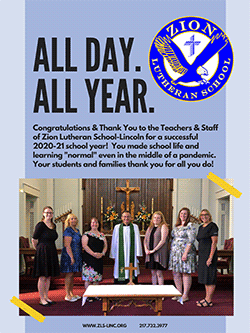|
 It was mid-February and the small town of Morton in far West Texas
had just received its first doses of the Moderna coronavirus vaccine
- just a few weeks after a beloved physician's assistant had died,
and not long after the hospital's clinic was forced to close for two
weeks because all the staff were sick with COVID-19. It was mid-February and the small town of Morton in far West Texas
had just received its first doses of the Moderna coronavirus vaccine
- just a few weeks after a beloved physician's assistant had died,
and not long after the hospital's clinic was forced to close for two
weeks because all the staff were sick with COVID-19.
Herrera, a 28-year-old nurse, was asked to organize the inoculation
effort. Patients and doctors would make 800-mile (1,290 km) round
trip drives from Austin and elsewhere to obtain vaccines. Herrera
had a waiting list with over 900 names.
"And then, it was just like one day people stopped calling. People
stopped coming in," she said. "It just dropped off."
Herrera was not alone as she watched vaccine demand dry up beginning
in early April. Public health experts say vaccination drives around
the United States began to fall off sharply at the same time,
resulting in President Joe Biden missing his stated goal of having
70% of Americans aged 18 and older at least partially vaccinated by
July 4.

The Centers for Disease Control on Thursday said that 65.7% of
adults had taken at least one dose. Biden visited North Carolina on
Thursday to make the case for more people to get vaccinated.
A combination of problems with access, along with mistrust about the
vaccines and how quickly they were rolled out, are the biggest
challenges, health officials said.
Morton is the county seat of Cochran County. Just 37% of its
residents are at least partially vaccinated, according to the Texas
Department of State Health Services - far below the national figure
of 53.7%, according to the CDC.
Cochran County is 61% Latino and one-fifth of its 2,800 residents
are living in poverty, according to the Census Bureau.
Polling data from the Kaiser Family Foundation shows a gap between
non-Hispanic whites who say they have received the vaccine - 65% -
versus Latinos at 57%. Complete, consistent data on the racial
breakdowns of who has received the vaccine is not available from
most states.
Kaiser polling also shows that people making less money are far less
likely to have received a vaccine, with their data showing that 42%
of those making less than $40,000 a year are unvaccinated, as
opposed to 19% unvaccinated among those making $90,000 a year or
more.
'NOT A HOAX'
Reuters interviewed 14 unvaccinated people aged 36 and younger in
Cochran County and neighboring Hockley County this week. Concerns
about the speed with which vaccines were developed and a general
view that younger people were less likely to fall ill were the most
cited reasons for not taking the shot.
[to top of second column] |

"COVID is not a hoax, I'm not one of those people, I'm not an anti-vaxxer,"
said Michelle Martinez, a 27-year-old working at the R&H Grill in
Morton. "But these vaccines were just developed extremely quickly.
I'm not going to take it."
Getting younger adults vaccinated https://www.reuters.com/world/us/white-house-concede-us-likely-miss-july-4-covid-19-vaccine-target-nbc-news-2021-06-22
is an important tool in eradicating the coronavirus in the United
States, said infectious disease official Anthony Fauci, especially
with the impact of the more transmissible Delta variant.
Rupali J. Limaye, an expert in vaccine behavior at Johns Hopkins,
said vaccination rates were especially lagging in communities of
color.
The biggest reason for those disparities, Limaye argues, is access.
Problems include distance to vaccine centers, not being able to get
time off work to get a shot, language barriers and mistrust of the
healthcare system.
Rebecca Weintraub, faculty director of the Global Health Delivery
Project at Harvard University, said that even before COVID-19,
vaccine hesitancy had been steadily increasing. The best weapons in
wooing people into taking the vaccine were local physicians, along
with church and community leaders, and having easy, constant access
to the shots. "The vaccine should be on the menu at
all times, including when you're seeing a primary care provider or
any other provider in a health care setting," she said. "We haven't
done that yet."

Nick Honesto, a 36-year-old in Morton, had an uncle and a friend die
from COVID-19, but said he still is not convinced to take the
vaccine.
"The shot is one thing that puts a lot of fear in me, it's got me
really spooked," he said. "How can other vaccines take years and
years to come up with - but this one comes out right away? More
testing needs to be done to convince me."
(Reporting by Brad Brooks in Morton, Texas; editing by Grant McCool)
[© 2021 Thomson Reuters. All rights
reserved.] Copyright 2021 Reuters. All rights reserved. This material may not be published,
broadcast, rewritten or redistributed.
Thompson Reuters is solely responsible for this content |